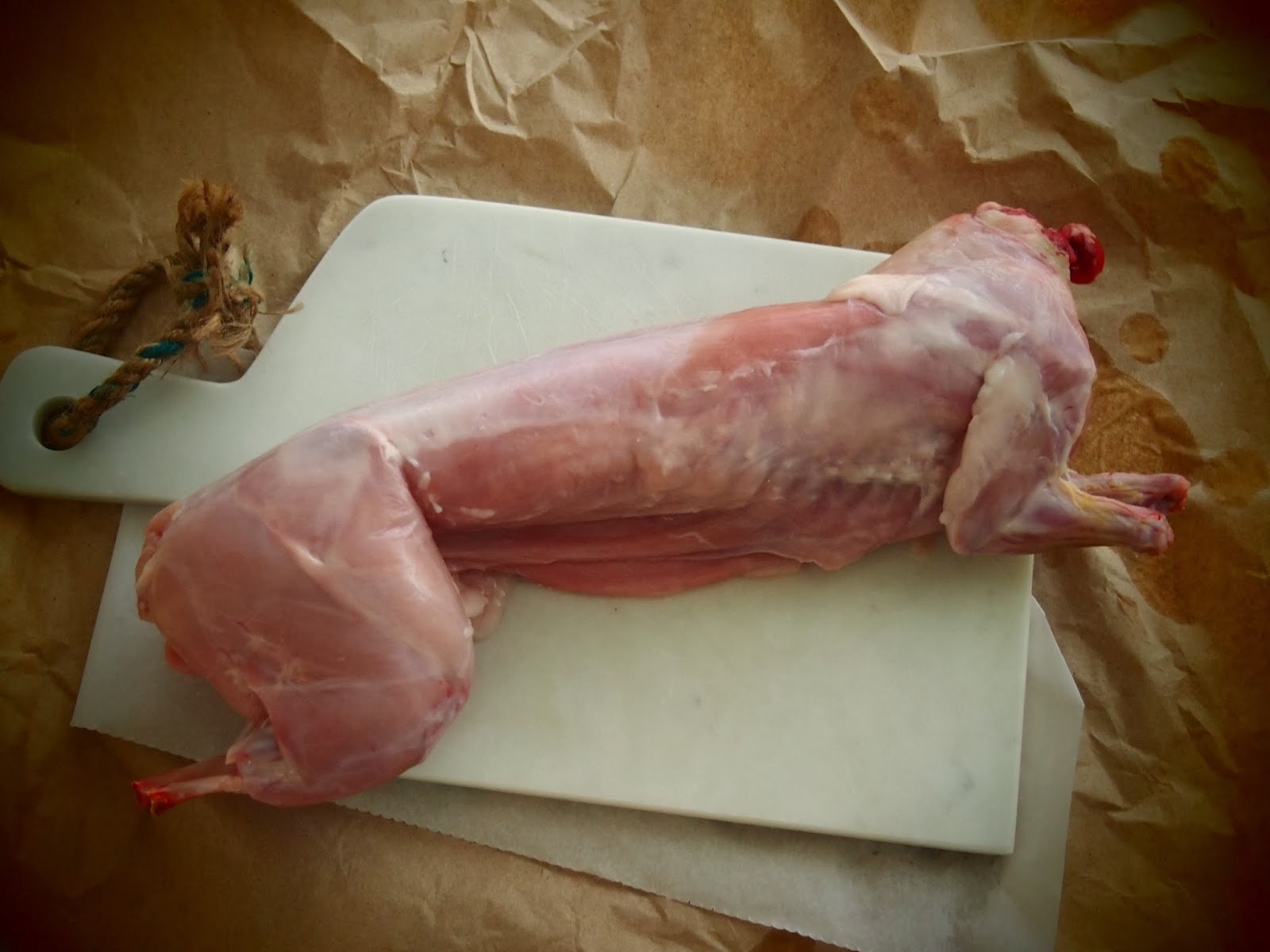RABBIT IN MUSHROOM SAUCE WITH TAGLIATELLE
Rabbit is one of those things I consider to be a “gateway meat” to the
wonderful world of game meats. Why is this? Well it tastes like chicken, well
sort of, otherwise why not just eat chicken? But it’s more than chicken,
rabbit has a very delicate flavour with a touch of gaminess that simply makes
it special.
But how do you do this wonderful game meat justice? My partner claims
he’d only eaten properly cooked rabbit when prepared by farmers, never in a
restaurant. ‘Why do you think that is?’ I once asked ‘Well farmers need to know
how to do it right, they eat rabbit all the time -- controlling rabbit populations
in the country is absolutely necessary which means you have lots of free meat
-- so they might as well do it well’.
Clearly, rabbit is the kind of meat you need to understand in order to
prepare it well so here are a few tips and a rustic recipe that demonstrates
these principles and will help you prepare the bashful rabbit with the care it
deserves.
KNOW YOUR RABBIT!
- Jointing your rabbit
properly – here is a link to help guide you through this fun
process: http://www.youtube.com/watch?v=WYancLuBrmE
- Different cuts cook at very
different speeds. This is why jointing your rabbit properly is a must.
- Delicate meat means pairing
it with delicate non-overbearing flavours
- Don't overcook the meat,
rabbit needs to be plump and moist not dry
- Save the offal, it’s a treat!
RABBIT IN MUSHROOM SAUCE WITH TAGLIATELLE
Serves 4
INGREDIENTS:
1 rabbit, jointed
olive oil
½ L stock, chicken, rabbit, or vegetable
2 shallots, finely chopped
bacon, cut into meaty cubes
mushrooms (i.e. cremini and oyster), sliced into large meaty portions
A bunch of fresh thyme
1 cup of white wine
½ cup of cream (you may add more if needed)
1 tbsp, grainy Dijon mustard
parsley, chopped
500g tagliatelle pasta
salt and pepper
METHOD:
- Joint rabbit as shown in the
link I posted above. The only thing I would do differently is to keep the
middle of the torso in one larger piece so that I can remove the two
strips of loin in one clean piece.
- Poach the back legs in a pot
filled with water and a bouquet garni of parsley, thyme, and a bay leaf.
Bring the water to a boil then turn down to a simmer for about 40-45
minutes.
- Bring a large pot of water
up to a boil for the tagliatelle pasta to be cooked later.
- Make sure your remaining
cuts are clean and trimmed of fat, paying particular attention to the
liver.
- Once your legs are poached,
cut away the meat from the bones so that you have plump pieces of meat
then set aside.
- To make the mushroom sauce,
fry the bacon and shallots in olive oil over a medium hot pan. Add the
mushrooms and thyme leaves and let simmer until the mushrooms have let out
some water, and once the liquid begins to reduce add in the white wine and
let reduce again.
- Once the wine has reduced to
about 1/3, add the stock and let reduce again to 1/3.
- While your sauce is
reducing, begin to cook the different cuts of rabbit, adding in each cut
in succession. In a pan, heat up some olive oil on medium heat. You first
fry the fore legs on both sides for about 5 minutes. Then add in
your loins to cook on both sides for another 3 minutes, followed by the
leg cuts, and finally the fast-cooking belly flaps.
- Throw in the pasta into
salted boiling water to cook for however long the box indicates, usually
6-8 minutes depending on the pasta.
- While the meat is cooking,
you can add the cream to your mushroom sauce and let simmer for another
few minutes. Add in the grainy dijon mustard and the parsley. Stir and
simmer for a minute or two.
- Once your cuts of rabbit are
cooked add them to your mushroom sauce making sure the sauce and the meat
are well incorporated.
- Flash fry the liver in the
pan that you used to cook the rabbit meat.
- Once the pasta is cooked,
drain and add to the mushroom rabbit sauce, ensuring the pasta is covered
in the sauce.
- Pour onto a beautiful
serving platter topped off with the sliced liver and enjoy this rustic and
flavourful dish.












